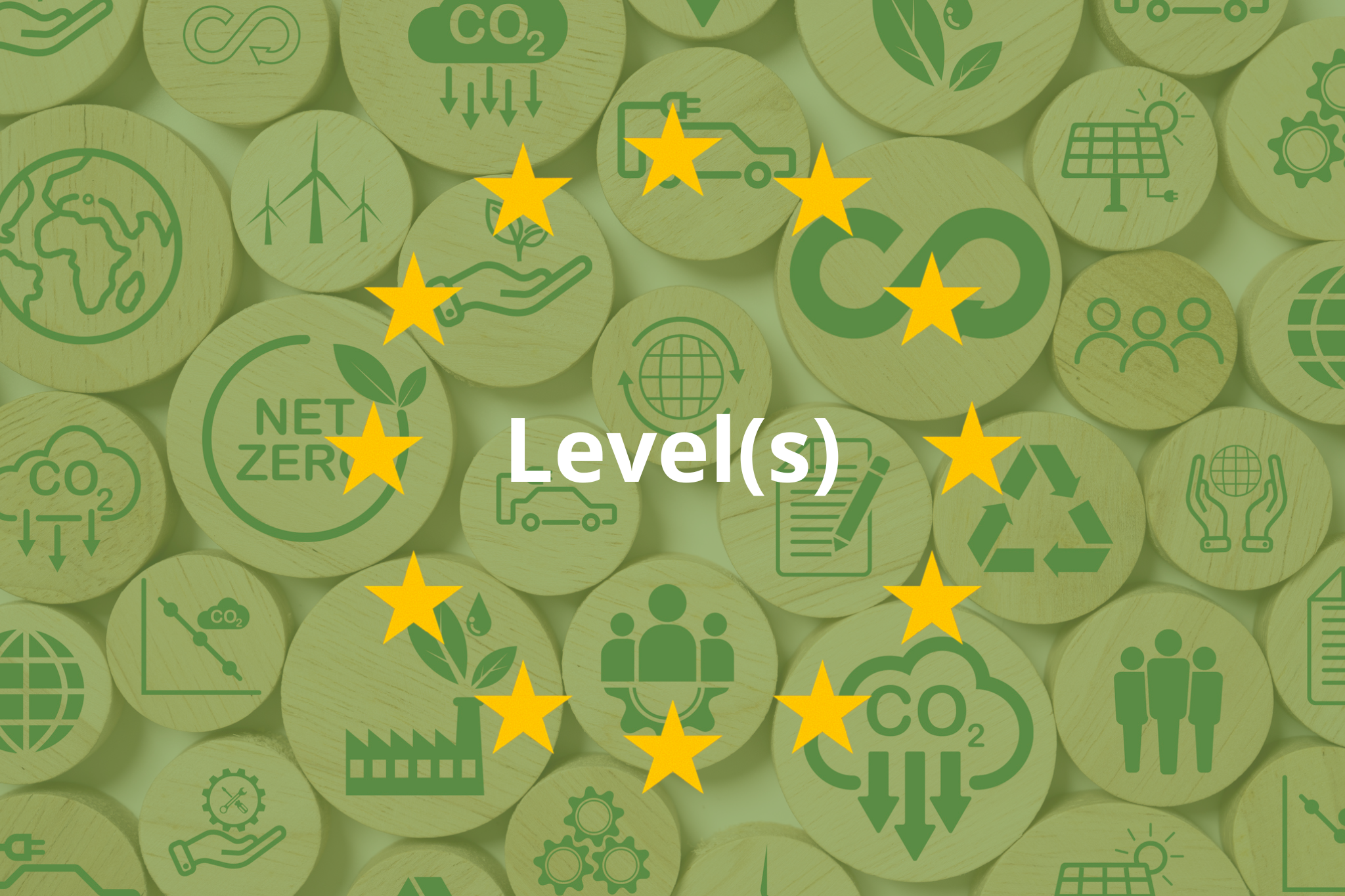Level(s) is an initiative by the European Union that provides a reference framework for measuring and reporting sustainability in the construction and renovation of buildings. Unlike traditional certifications such as BREEAM, LEED DGNB or VERDE, Level(s) is not a rating system but rather a methodology that ensures consistency in sustainability evaluation.
The main goal of Level(s) is to provide a common language that allows for uniform measurement, comparison, and reporting of the environmental impacts of buildings over their life cycle.
What is Level(s)?
Level(s) serves as the EU's common framework of fundamental sustainability indicators for buildings. It can be applied to both residential and commercial buildings, across all phases of the building life cycle.
Unlike certification systems like BREEAM, LEED, DGNB or VERDE, which establish fixed criteria that buildings must meet to obtain a sustainability label, Level(s) offers a methodology for assessment and reporting without setting boundaries on what results are deemed correct or incorrect. This makes it a valuable tool for achieving a common methodological framework, ensuring that all evaluations are comparable.
Structure of Level(s): Macro-objectives and indicators
The Level(s) framework is built upon six macro-objectives aimed at addressing the key environmental and social challenges in construction. Each of these macro-objectives is broken down into a series of specific indicators that allow for the assessment of sustainability-related aspects. These macro-objectives include:
- Greenhouse gas emissions: Evaluating emissions throughout the entire building life cycle.
- Resource efficiency and circular economy: This focuses on the management of materials, waste, and the extension of the life span of building components.
- Efficient water use: This assesses water consumption during the building use phases.
- Healthy and comfortable indoor spaces: This measures air quality, thermal comfort, lighting comfort, and acoustic comfort.
- Adaptation and resilience to climate change: This considers the building's ability to withstand climate variations, including the risk of extreme weather events.
- Life cycle cost and value: This analyses costs across the entire building life cycle, from construction to demolition.
For any Level(s) indicator, guidelines are provided at three different levels of depth, depending on how advanced the project is (design phase, execution and post-construction).
Macro-objectives and indicators table
Below is a table outlining each macro objective along with its respective indicators and the unit of measurement for each.
|
Macro objetive |
Indicator |
Measurement unit |
|
1. Greenhouse gas emissions along a buildings life cycle |
1.1 Use stage energy performance |
kWh/m²/year |
|
1.2 Life cycle Global Warming Potential |
kg eq. CO₂/m²/year |
|
|
2. Resource efficient and circular material life cycles |
2.1 Bill of quantities, materials and lifespans |
Unit quantities mass + years |
|
2.2 Construction & Demolition waste and materials |
kg of waste + materials per m² |
|
|
2.3 Design for adaptability and renovation |
Adaptability score |
|
|
2.4 Design for deconstruction, reuse and recycling |
Deconstruction score |
|
|
3. Efficient use of water resources |
3.1 Use stage water consumption |
m3/occupant/yr |
|
4. Healthy and comfortable spaces |
4.1 Indoor air quality |
Parameters for ventilation, COS + humidity |
|
4.2 Time outside of thermal comfort range |
% of the time out of range during the heating and cooling seasons |
|
|
4.3 Lighting and visual comfort |
Level 1 check list |
|
|
4.4 Acoustics and protection against noise |
Level 1 check list |
|
|
5. Adaption and resilience to climate change |
5.1 Protection of occupier health and thermal comfort |
Projected % time out of range in the years 2030 and 2050 |
|
5.2 Increased risk of extreme weather |
Level 1 checklist (under development) |
|
|
5.3 Sustainable drainage |
Level 1 checklist (under development) |
|
|
6. Optimised life cycle cost and value |
6.1 Life cycle costs |
€/m²/yr |
|
6.2 Value creation and risk factors |
Level 1 check list |
Integration with other initiatives: Taxonomy and VERDE Certification
Level(s) has been adopted as the reference framework for the European Taxonomy regulation, which classifies sustainable economic activities. Taxonomy establishes clear criteria that define whether an economic activity is environmentally sustainable, as part of the EU's effort to achieve climate neutrality by 2050.
Within the European Taxonomy, Level(s) serves as the primary methodological tool for measuring and reporting the environmental impact of buildings. For instance, the Taxonomy requires conducting a Life Cycle Analysis (LCA) of a building according to indicator 1.2 of Level(s), ensuring a coherent and standardized assessment of greenhouse gas emissions throughout the building life cycle.
Moreover, certifications like VERDE, which also promote sustainable building practices, heavily rely on Level(s)' guidelines and methodologies, solidifying it as a benchmark standard.
Conclusion
In conclusion, Level(s) is an innovative framework that is transforming how sustainability is measured and reported in construction across Europe. Although it is not a certification system like BREEAM, LEED, DGNB or VERDE, its value lies in establishing a common methodological standard that ensures sustainability data is consistent and comparable.
As its implementation expands through initiatives such as the EU Taxonomy and VERDE Certification, its importance will continue to grow in the coming years, supporting the transition towards more sustainable and resilient buildings.
Remember that at Zero Consulting, we can help you establish your ESG strategy and comply with European regulations for your asset portfolio.


